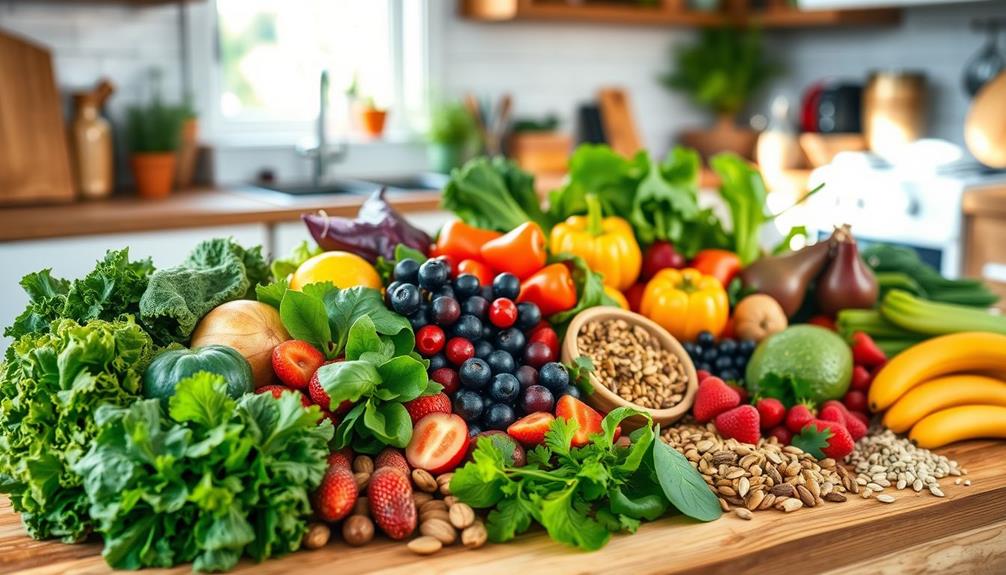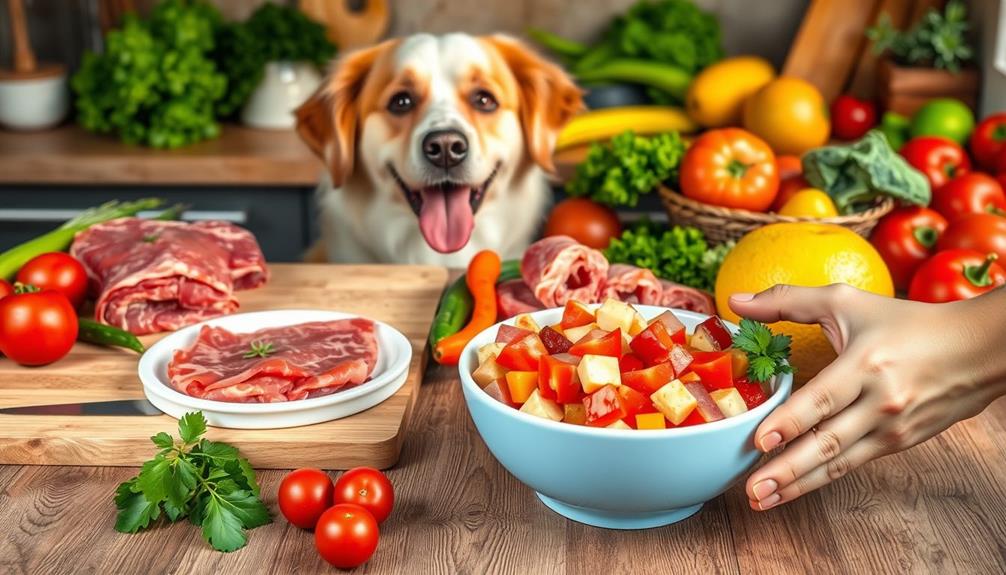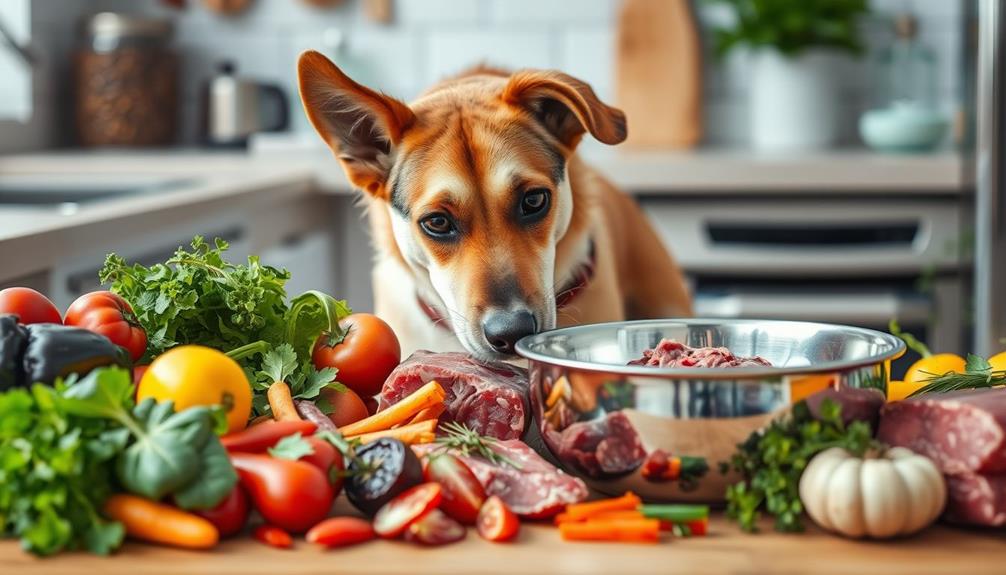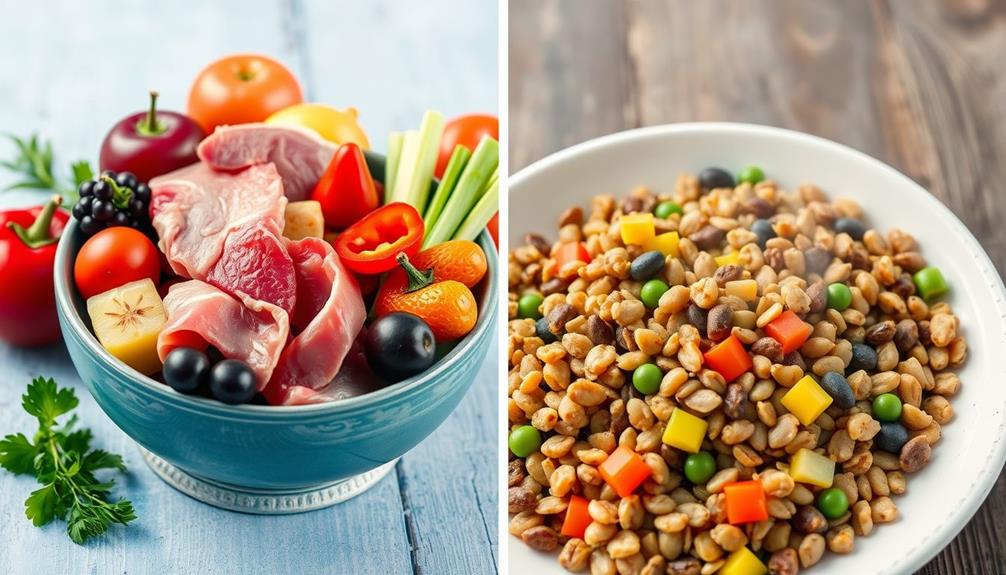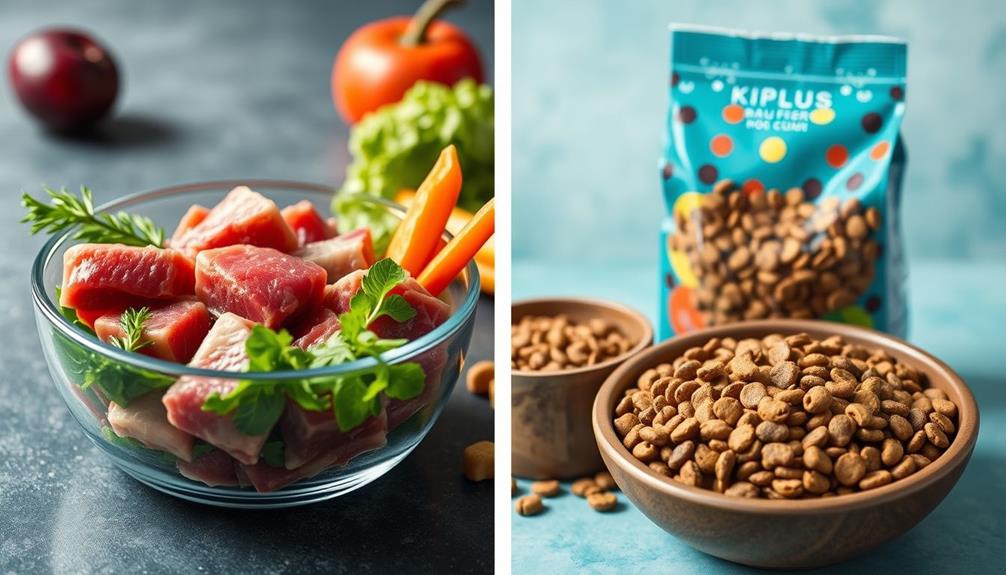Raw food can be healthy, offering benefits like increased vitamins, minerals, and antioxidants. It's linked to better digestion and lower risks of chronic diseases. However, you should be aware of potential nutritional deficiencies, particularly in vitamin B12 and omega-3 fatty acids. Eating raw animal products increases your risk of foodborne illness, so caution is essential. While raw diets promote health, a balance of raw and cooked foods may optimize nutrient absorption and reduce health risks. By exploring the topic further, you can find a sustainable approach that best suits your dietary needs. To incorporate more raw foods into your diet while minimizing potential risks, consider following raw food safety tips. These can include properly washing and preparing raw fruits and vegetables, sourcing high-quality animal products from reputable sources, and being mindful of cross-contamination when handling raw and cooked foods in the kitchen. By educating yourself on safe handling practices, you can enjoy the benefits of raw food while minimizing potential health risks. In addition to safety precautions, it’s important to consider the potential for nutrient absorption. Some nutrients are more readily available in raw form, while others are enhanced through cooking. By embracing a balanced approach, you can maximize the benefits of both raw and cooked foods. When done thoughtfully, a raw food diet can offer a multitude of benefits, including improved digestion, increased energy, and enhanced overall well-being. By understanding and implementing safe handling practices, you can confidently enjoy the raw food diet benefits while minimizing potential health risks.
Key Takeaways
- The raw food diet can offer health benefits like improved skin health, enhanced digestion, and lower risk of chronic diseases.
- Nutritional risks include deficiencies in vitamin B12, omega-3 fatty acids, and protein, which can impact overall health.
- Cooking can enhance nutrient absorption, making certain vitamins more accessible compared to raw foods.
- Raw animal products pose a risk of foodborne illnesses due to harmful bacteria, necessitating caution in their consumption.
- A balanced diet incorporating both raw and cooked foods is often the most beneficial for optimal health outcomes.
Overview of the Raw Food Diet
The raw food diet, rooted in the belief that uncooked and unprocessed foods offer superior health benefits, emphasizes the consumption of fruits, vegetables, nuts, seeds, and sprouted grains. This approach to eating has gained popularity since the mid-1970s, thanks to Viktoras Kulvinskas' book "Survival into the 21st Century."
You'll find that the raw food diet is typically divided into three categories: the raw vegan diet, which excludes all animal products; raw vegetarian, which can include raw dairy and eggs; and raw omnivorous, which incorporates raw meats and fish.
Proponents argue that consuming plant-based foods in their natural state helps preserve crucial nutrients and enzymes that cooking can destroy. Additionally, certain raw foods, such as celery juice, are known for their anti-inflammatory properties, which may enhance overall health.
However, it's important to recognize that some nutrients become more bioavailable when cooked, raising questions about the overall nutrient balance in a strictly raw diet. Moreover, be aware that consuming uncooked foods also poses a risk of foodborne illness, particularly with raw animal products.
If you're considering this lifestyle, weigh these factors carefully to guarantee you're making informed choices about your health and nutrition.
Health Benefits of Raw Foods
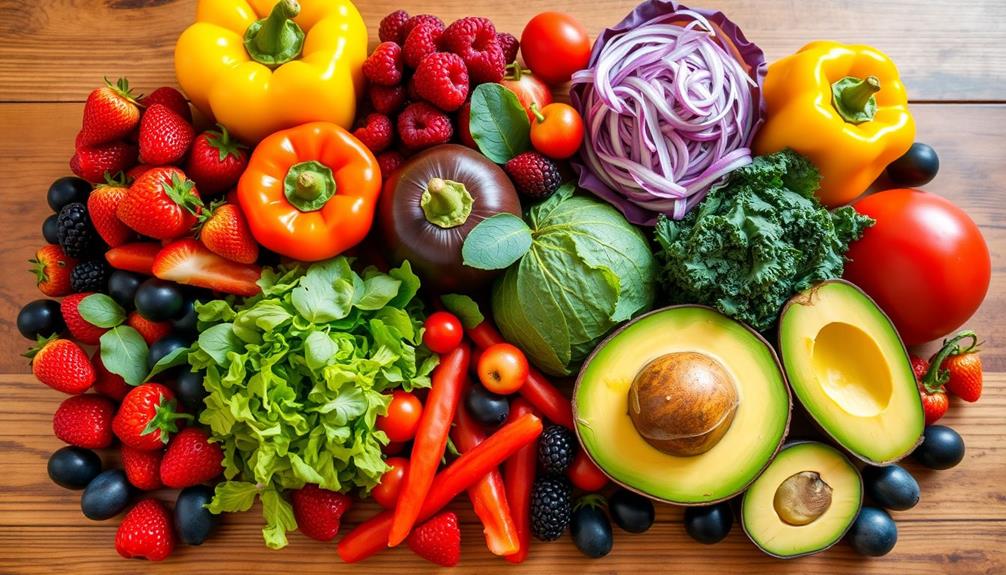
Eating raw foods can offer a wealth of health benefits that may enhance your overall well-being. Raw food diets, rich in raw fruits and vegetables, provide abundant vitamins, minerals, and antioxidants that can improve your skin health and boost energy levels.
The incorporation of essential oils for health can further enhance the benefits of a raw food diet, as many oils support various bodily functions and promote overall wellness. The high fiber content in these foods aids digestion and promotes satiety, making it easier for you to achieve weight loss by consuming fewer calories compared to processed options.
Moreover, studies suggest a raw food diet may reduce the risk of chronic diseases like heart disease and diabetes by promoting a higher intake of plant-based nutrients. By focusing on raw foods, you could experience lower overall cholesterol and triglyceride levels, which indicates significant cardiovascular benefits.
Increased consumption of raw fruits and vegetables is also linked to lower blood pressure and a reduced risk of stroke, contributing to your overall heart health.
Incorporating more raw foods into your diet can enhance your energy while supporting your long-term health. Embracing these natural, unprocessed options may just be the key to revealing a healthier, happier you.
Nutritional Risks and Deficiencies

While incorporating raw foods can enhance your health, it's important to be aware of the nutritional risks and deficiencies that may arise. Individuals with certain mental health conditions, such as Borderline Personality Disorder (BPD), may find it particularly challenging to maintain a balanced diet, which can exacerbate their symptoms.
Here are some key concerns to take into account:
- Vitamin B12: A significant number of raw food dieters—38%—are found to be deficient, which can lead to serious health issues.
- Omega-3 fatty acids: These essential fats are primarily found in animal products, making it tough to get enough on a raw food diet.
- Protein sources: Limited protein options can impact muscle maintenance and repair, leading to inadequate intake over time.
- Bone density: Long-term raw food diets may contribute to lower bone density, raising the risk of osteoporosis and fractures.
- Caloric intake: The restrictive nature of raw foods can result in insufficient caloric intake, complicating your nutritional adequacy and overall health outcomes.
Being mindful of these nutritional risks and deficiencies is imperative if you're contemplating a raw food diet.
Make certain to plan your meals carefully to avoid long-term health consequences. Your body needs a range of nutrients to thrive, and it's essential to guarantee you're meeting those needs.
Cooking Vs. Raw: Nutrient Comparison
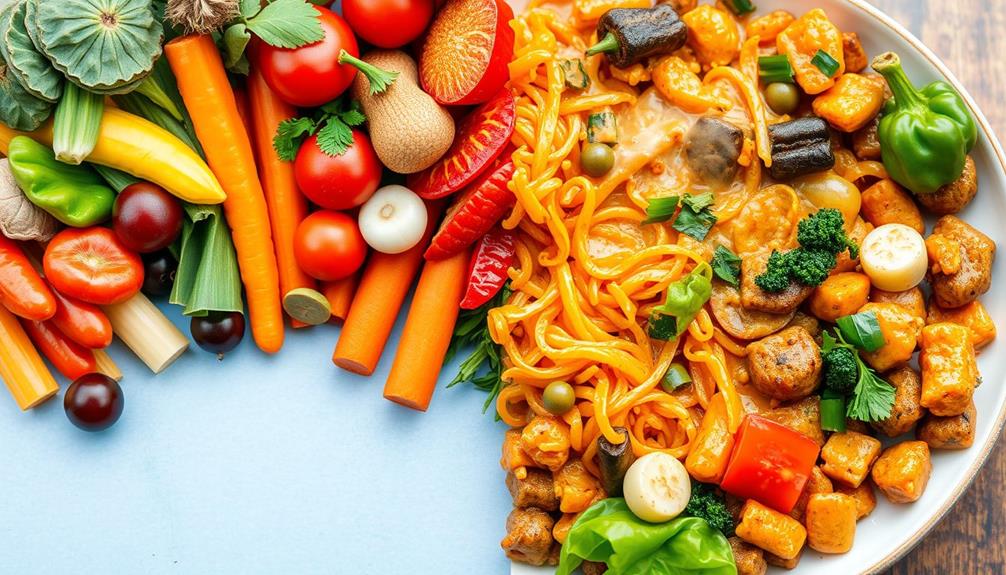
When you compare cooking and raw foods, you'll notice each has its own strengths regarding nutrient retention.
Cooking can sometimes enhance nutrient absorption, making certain vitamins more accessible, while raw foods preserve natural enzymes and nutrients, which can increase energy levels and support digestive health.
Understanding these differences can help you create a balanced diet that maximizes your health benefits, especially when considering the benefits of raw food.
Nutrient Retention in Cooking
Often, the debate around nutrient retention in cooking versus raw food centers on how different methods affect vitamin and mineral content. Cooking can lead to nutrient loss, especially with water-soluble vitamins like vitamin C and the B vitamins. Boiling vegetables, for instance, may cause a loss of over 50% of these nutrients.
However, cooking also enhances the bioavailability of certain nutrients. Evaluating potential side effects of various cooking methods is essential for maintaining health while enjoying your meals. Here are some key points to take into account:
- Cooking can increase the absorption of lycopene in tomatoes by up to 2.5 times.
- Steaming retains up to 90% of certain vitamins, compared to boiling.
- Raw foods generally preserve more vitamins and enzymes.
- Cooked foods often provide essential nutrients in higher amounts due to better digestibility.
- A balanced diet incorporating both raw and cooked foods can optimize nutrient intake.
Understanding nutrient retention helps you make informed choices in your diet. While raw foods offer a wealth of vitamins, cooking can release other nutrients, enhancing their digestibility and bioavailability.
Benefits of Raw Foods
Raw foods provide significant health benefits, particularly when it comes to nutrient retention. By sticking to a raw food diet, you can enjoy higher levels of water-soluble vitamins, like vitamin C and B vitamins, since cooking often diminishes these nutrients. This could enhance your overall health, as these vitamins are fundamental for various bodily functions.
Additionally, raw diets are high in fiber, which aids digestion and promotes satiety, making weight loss more achievable compared to diets filled with cooked, processed foods. Moreover, incorporating raw fruits and vegetables can bolster your immune system, as they're packed with antioxidants and key nutrients that support overall well-being natural remedies alongside conventional medications.
Additionally, raw foods contain natural enzymes that can support digestion, giving you an extra health boost. There's also evidence suggesting that individuals on raw food diets may experience lower levels of LDL cholesterol, potentially reducing the risk of heart disease.
However, it's important to be aware that solely relying on raw foods might lead to deficiencies in key nutrients, such as vitamin B12 and omega-3 fatty acids, typically found in raw animal products or certain cooked foods. Thus, while a raw food diet offers remarkable benefits, it's significant to evaluate a balanced approach to guarantee you're meeting all your nutritional needs.
Cooking Enhances Nutrient Absorption
Many people mightn't realize that cooking can greatly enhance nutrient absorption in various foods. While the raw food diet has its benefits, cooking can make certain nutrients more accessible and improve overall nutrient intake.
For instance, understanding the importance of a well-balanced diet can help in managing finances, as budgeting for healthy eating may lead to a more sustainable lifestyle.
- Cooking tomatoes increases lycopene, linked to reduced prostate cancer risk.
- Heating carrots and sweet potatoes boosts beta-carotene absorption, a precursor to vitamin A.
- Cooking improves the digestibility of proteins and carbohydrates, making nutrients easier to absorb.
- Although cooking destroys some water-soluble vitamins, like vitamin C and certain B vitamins, it also reduces antinutrients that hinder mineral absorption.
- A balanced diet of raw and cooked foods often leads to better health outcomes.
Dangers of Raw Animal Products
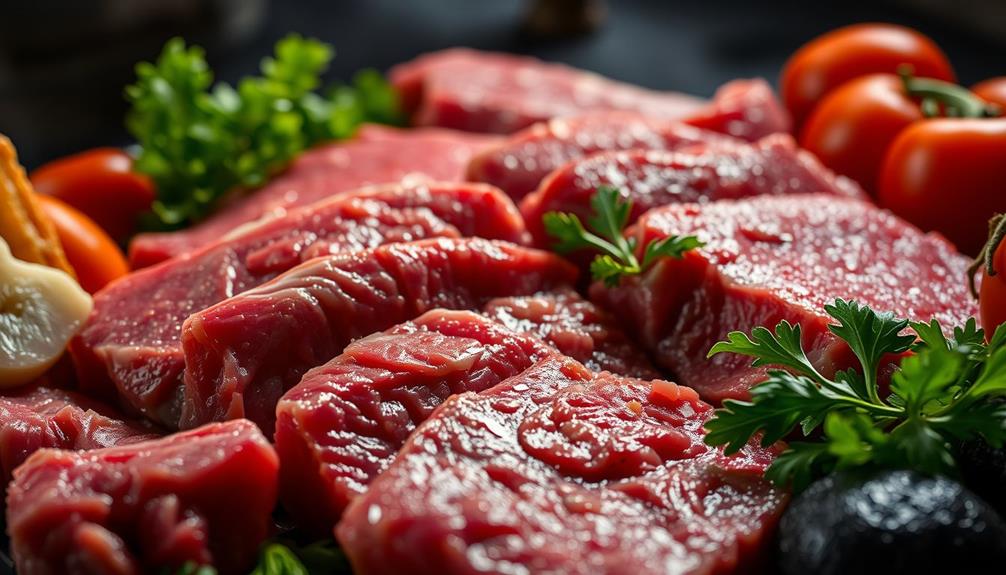
When you consume raw animal products, you're exposing yourself to serious health risks from harmful bacteria like E. coli and Salmonella.
These pathogens can lead to severe illnesses, especially for vulnerable groups such as pregnant women and those with weakened immune systems.
Additionally, it's important to take into account how certain health screenings, like mammography guidelines, may be influenced by dietary choices and overall health.
It's crucial to understand safe consumption guidelines to protect your health.
Health Risks Involved
Consuming animal products in their raw state can expose you to serious health risks. The potential for foodborne illnesses is greatly heightened when you consume raw animal products. This is particularly concerning for vulnerable populations, including the elderly, who may already have compromised immune systems and face greater risks from foodborne pathogens.
Understanding financial considerations for elderly care can also help families make informed decisions about food safety and nutrition. Here are some key dangers to reflect on:
- Harmful bacteria like E. coli and Salmonella can be present in undercooked meats.
- Unpasteurized dairy may harbor pathogens that lead to severe gastrointestinal issues.
- Raw eggs carry a risk of salmonella infection, resulting in symptoms that range from mild discomfort to serious illness.
- Eating undercooked meats or poultry increases your chances of contracting dangerous foodborne pathogens.
- Certain raw foods, such as kidney beans and sprouts, can contain toxins or harmful bacteria if not properly prepared.
These health risks highlight the importance of food safety practices. By opting for fully cooked or pasteurized options, you can greatly reduce your risk of falling ill.
Always remember, while raw food diets may seem appealing, the dangers associated with raw animal products can outweigh the benefits. Stay informed and prioritize your health by making safe food choices.
Safe Consumption Guidelines
Raw animal products pose significant health risks that you should be aware of if you're considering a diet that includes them. Consuming these foods can expose you to harmful bacteria like E. coli, Salmonella, and Listeria, which can lead to severe foodborne illnesses.
For instance, raw eggs are notorious for carrying the risk of Salmonella infection, causing gastrointestinal distress and complications. Additionally, understanding the financial implications of maintaining a raw food diet may be important, as some raw animal products can be costly and may contribute to your overall budget during challenging times.
Unpasteurized dairy products are particularly dangerous, as they can harbor pathogens that result in serious health issues. It's vital to avoid eating raw meats and poultry altogether, as these should always be cooked to safe internal temperatures to eliminate harmful bacteria effectively.
While washing raw fruits and vegetables is important to reduce food safety risks, it won't protect you from the dangers of raw animal products. If you choose to include these foods in your diet, be aware of these risks and consider consulting a healthcare professional for guidance.
Ultimately, prioritizing your health means understanding the potential dangers and taking necessary precautions to guarantee your safety.
Practical Tips for Beginners
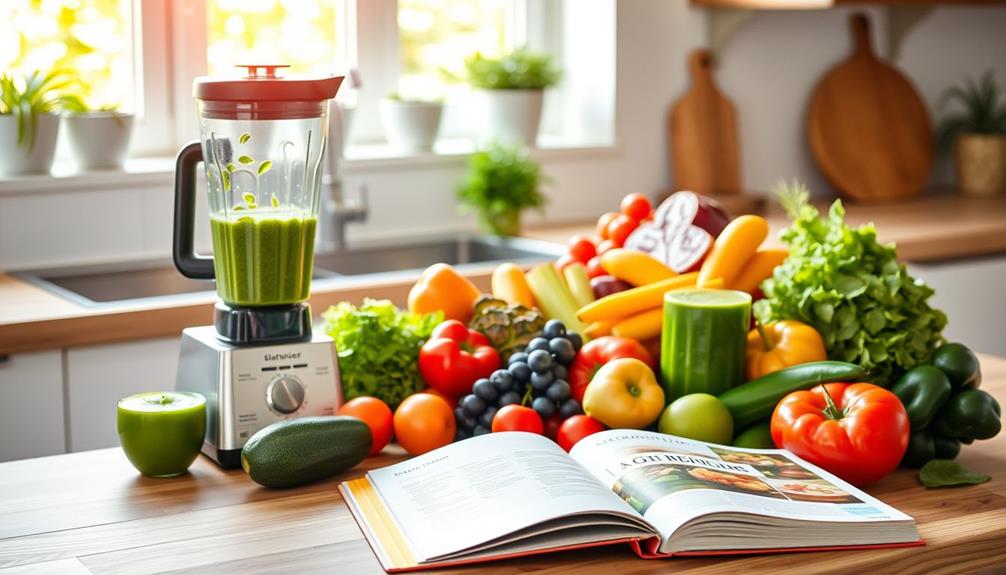
Starting your journey into raw food can feel overwhelming, but you can make it manageable by gradually incorporating at least one raw meal or snack into your daily routine. This approach helps you adjust without feeling deprived.
To support your emotional well-being during this shift, consider heartfelt expressions of love that can motivate you to embrace this new lifestyle. Here are some practical tips to get you started:
- Invest in essential kitchen tools like a high-quality blender and food processor to simplify the preparation of smoothies and soups.
- Focus on seasonal produce to enhance flavor, nutrition, and affordability, making it easier to eat raw.
- Experiment with soaking and sprouting whole grains and legumes to increase nutrient availability and variety in your meals.
- Join online support groups or local communities dedicated to raw food diets for recipe ideas and motivation from like-minded individuals.
- Keep a journal to track your progress and how different raw foods make you feel, helping you identify what works best for you.
Debunking Common Myths

Embracing a raw food lifestyle often comes with a set of misconceptions that can cloud your understanding of its benefits and drawbacks. One common myth is that all cooking destroys nutrients; yet, some cooking methods can enhance nutrient bioavailability, like lycopene and beta-carotene. Additionally, believing raw foods are inherently safer is misleading, as raw animal products can harbor pathogens such as E. coli and Salmonella, posing health risks.
Another assumption is that raw food diets are automatically high in protein. In reality, if not carefully planned, these diets can lead to nutritional deficiencies, especially for those avoiding animal products. You might also think that all natural enzymes remain intact in raw foods, but your body produces its own digestive enzymes regardless of what you eat, making enzyme intake less critical.
Lastly, the notion that raw food diets guarantee weight loss is oversimplified. They can lead to nutritional deficiencies and may not provide enough calories, which could result in unintended health consequences.
| Myth | Reality | Impact on Health |
|---|---|---|
| Cooking destroys nutrients | Certain methods enhance nutrient absorption | Better nutrient intake |
| Raw foods are safer | Raw animal products can carry pathogens | Increased health risks |
| Raw diets are high in protein | Can lead to deficiencies without planning | Low protein intake |
| Enzymes are essential | Body produces its own digestive enzymes | Reduced importance of raw intake |
| Raw diets guarantee weight loss | Can cause nutritional deficiencies and inadequate calories | Potential health consequences |
Expert Opinions on Raw Diet
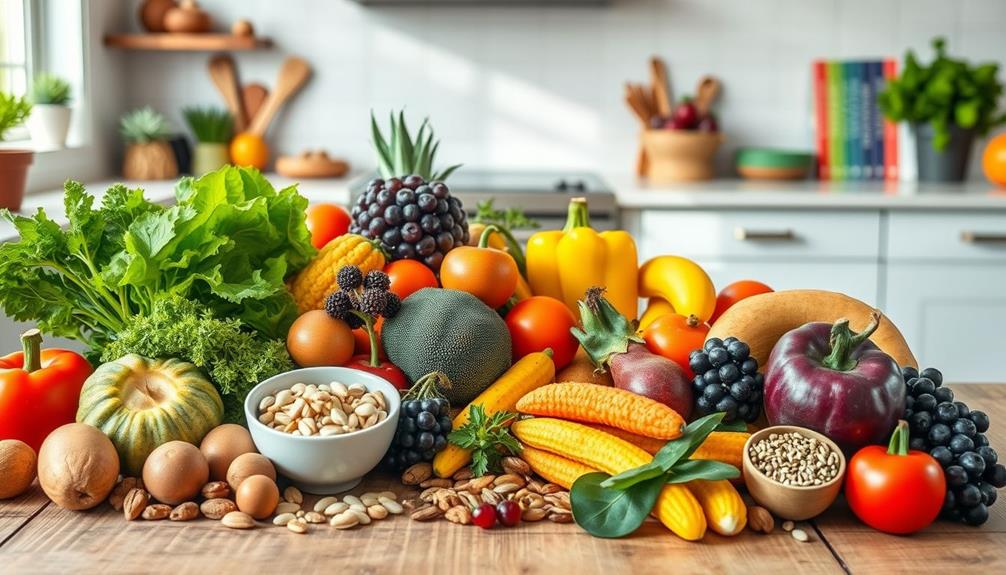
When it comes to the raw food diet, experts offer a range of insights that highlight both its potential benefits and risks. While embracing more fruits and vegetables can lead to health benefits, strict adherence to a raw food diet may pose challenges.
- Nutrient deficiencies, particularly in vitamin B12 and omega-3 fatty acids, are common concerns.
- Cooking enhances the bioavailability of nutrients like lycopene in tomatoes, suggesting a raw-only approach may limit absorption.
- Lower LDL cholesterol levels are a plus, but there's a risk of decreased bone density and increased osteoporosis risk.
- Experts recommend a balanced diet over extreme restrictions to harness the benefits of raw foods without missing out on cooked options.
- Individualized dietary choices are vital, as the restrictive nature of raw diets can hinder long-term adherence and overall health.
Ultimately, while you can enjoy the perks of raw foods, it's important to contemplate a more balanced approach that incorporates cooking for ideal nutrient intake.
Long-term Sustainability Considerations
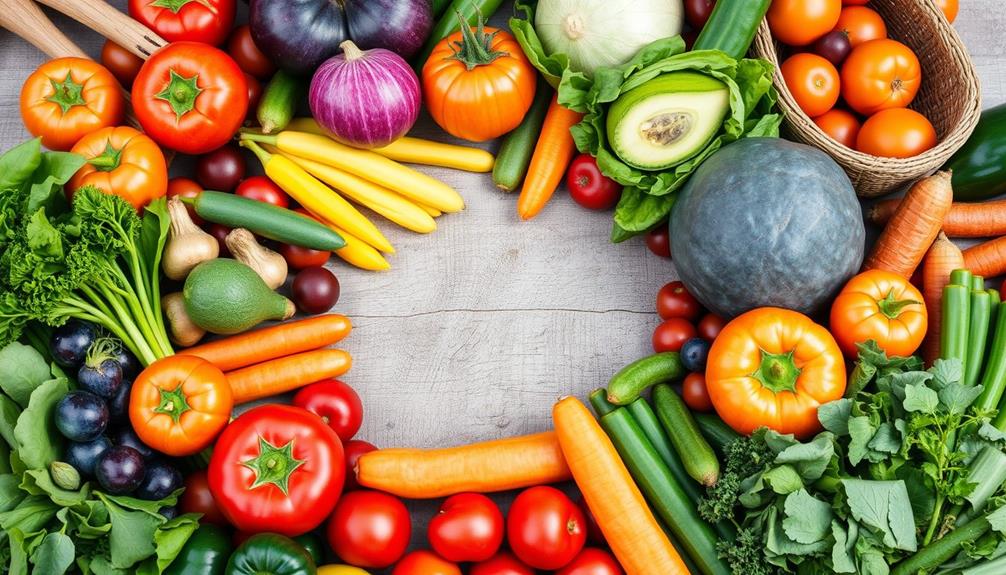
Maintaining a raw food diet over the long term can be challenging due to several sustainability factors.
First, long-term adherence to this restrictive nature often leads to nutrient deficiencies, particularly in vitamin B12, iron, and omega-3 fatty acids. You'll need to prioritize careful meal preparation and possibly consider supplementation to guarantee a thorough nutrient intake.
Moreover, the social isolation that can occur when dining out or attending gatherings may also make it difficult for you to stick with the diet. Studies have shown that people on raw food diets might experience lower bone density, raising the risk of osteoporosis if dietary variety isn't emphasized.
The time and effort required for sourcing raw ingredients and preparing meals can become overwhelming and costly, which might deter your commitment to the diet in the long run.
Nutrition experts usually suggest a more balanced approach that incorporates a variety of foods, both raw and cooked. This strategy not only supports long-term sustainability but also helps you maintain your overall health, ensuring you get all necessary nutrients without the added stress of strict dietary limitations.
Frequently Asked Questions
What Are the Disadvantages of Raw Food?
Raw food diets can lead to nutrient deficiencies, digestive issues, and risks from harmful bacteria. You'll also face challenges in meal planning and social situations, potentially causing boredom and making it hard to stick with the diet.
Why Avoid Raw Foods?
Raw food risks really require your reconsideration. You'll face potential pathogens, nutrient shortages, and social struggles. Without careful planning, you might miss out on essential elements, putting your health and happiness at serious risk.
What Are the Healthiest Foods to Eat Raw?
When you're looking for the healthiest foods to eat raw, focus on fresh fruits, leafy greens, cruciferous veggies, nuts, seeds, and sprouted grains. They offer essential nutrients and health benefits without losing their nutrient density.
What Happens if You Only Eat Raw Fruits and Vegetables?
If you plunge into a sea of raw fruits and vegetables, you might feel invigorated at first, but over time, you could face nutrient deficiencies, energy dips, and potential health risks without balancing your diet.
Conclusion
In the end, adopting a raw food diet can be a double-edged sword. While it offers numerous health benefits, it is crucial to be aware of potential nutritional gaps and risks, especially with raw animal products. If you're considering diving into this lifestyle, make sure to do your homework and listen to your body. Remember, you can't judge a book by its cover; what works for one person might not work for you. Stay informed and balanced!

